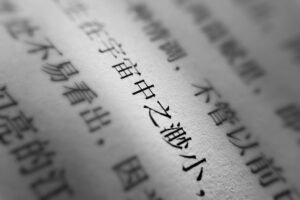The intricacies of Mandarin Chinese, a language rich in tonal and syntactical complexities, offer a fascinating study for linguists and language learners alike. Among its many intriguing aspects, the use of ‘又 (yòu)’ and ‘再 (zài)’ in expressing repeated actions is a notable feature, often presenting a challenge to learners. This article delves into these two characters’ usage, distinctions, and nuances, shedding light on their role in conveying repetition in Chinese grammar.
Table of Contents
Toggle1. Understanding ‘又 (yòu)’: Repeating Past Actions
In Mandarin, ‘又 (yòu)’ is commonly used to indicate that an action has occurred repeatedly. It is a versatile word, often seen in various grammatical constructions, and is primarily focused on actions that have already been completed. The general structure when using ‘又’ is:
又 + Verb
For example, “他又赢了比赛 (Tā yòu yíng le bǐsài)” translates to “He won the match again.” Here, ‘又’ indicates that the action of winning has occurred once more in the past.
2. The Role of ‘再 (zài)’: Indicating Future Repetitions
In contrast, ‘再 (zài)’ is used when discussing an action that will be repeated in the future. This character sets the stage for an expectation or a plan to redo an action. The structure is usually:
再 + Verb
For instance, the sentence “我要再试一次 (Wǒ yào zài shì yī cì),” meaning “I want to try again,” ‘再’ suggests that the speaker intends to repeat the action of trying in the future.
3. Nuances and Usage Scenarios
While both ‘又’ and ‘再’ deal with repetition, understanding their distinct nuances is vital to their correct application. ‘又’ is retrospective, looking back at actions that have occurred, whereas ‘再’ is prospective, looking forward to actions yet to happen.
This distinction becomes particularly important in complex sentences. For example, “他又再次拒绝了邀请 (Tā yòu zàicì jùjué le yāoqǐng),” which means “He refused the invitation again,” combines both ‘又’ and ‘再次’ (again) to emphasize the repeated nature of the action both in past and future contexts.
4. Common Errors and Misconceptions
A standard error among learners of Mandarin is the interchange of ‘又’ and ‘再’ due to their seemingly similar meanings. However, their correct usage is tied to the temporal context of the described action.
5. Conclusion: Embracing the Complexity
The nuanced use of ‘又 (yòu)’ and ‘再 (zài)’ in Mandarin Chinese is a vivid example of how the language encapsulates the intricacies of time and action. For learners and speakers, especially in contexts like global trade where precise communication is crucial, mastering these distinctions is not just a linguistic achievement but a step towards deeper cultural understanding and effective cross-cultural communication. As with many aspects of Mandarin, patience and practice are crucial to mastering these terms, enabling a richer, more accurate expression in this globally significant language.
Contact our head teacher, Chen Huimin, at info@lcchineseschool.com if you want to learn Chinese or have additional questions about our Chinese programs.
Sign up for a free trial class here.
Learn about our Internship Program in China.
Get free Chinese learning resources.
Learn about China’s 2024 Offical Holiday Schedule







